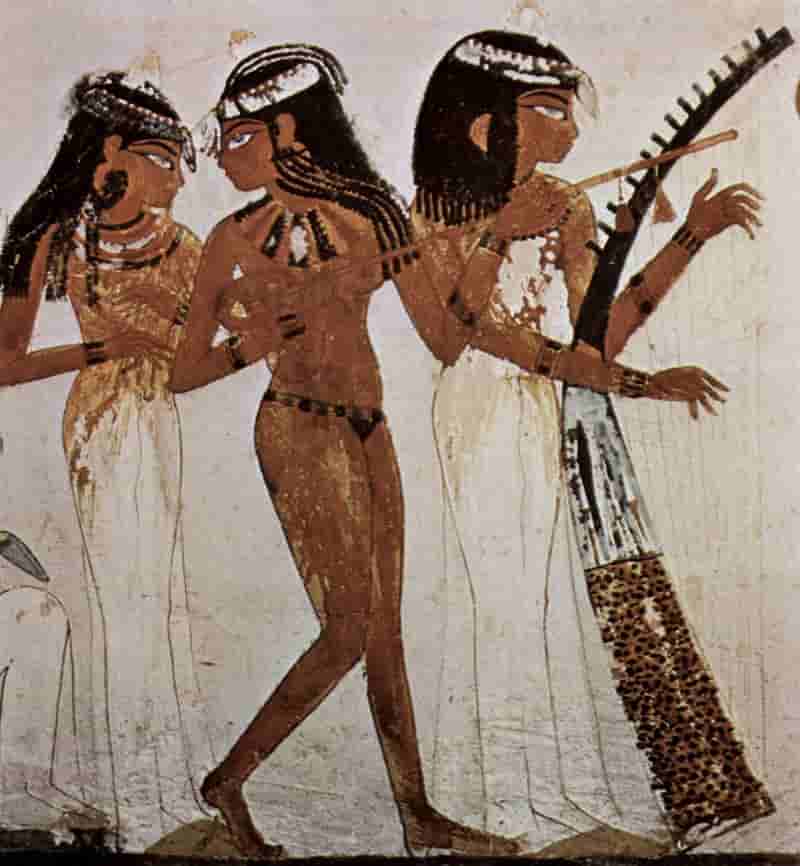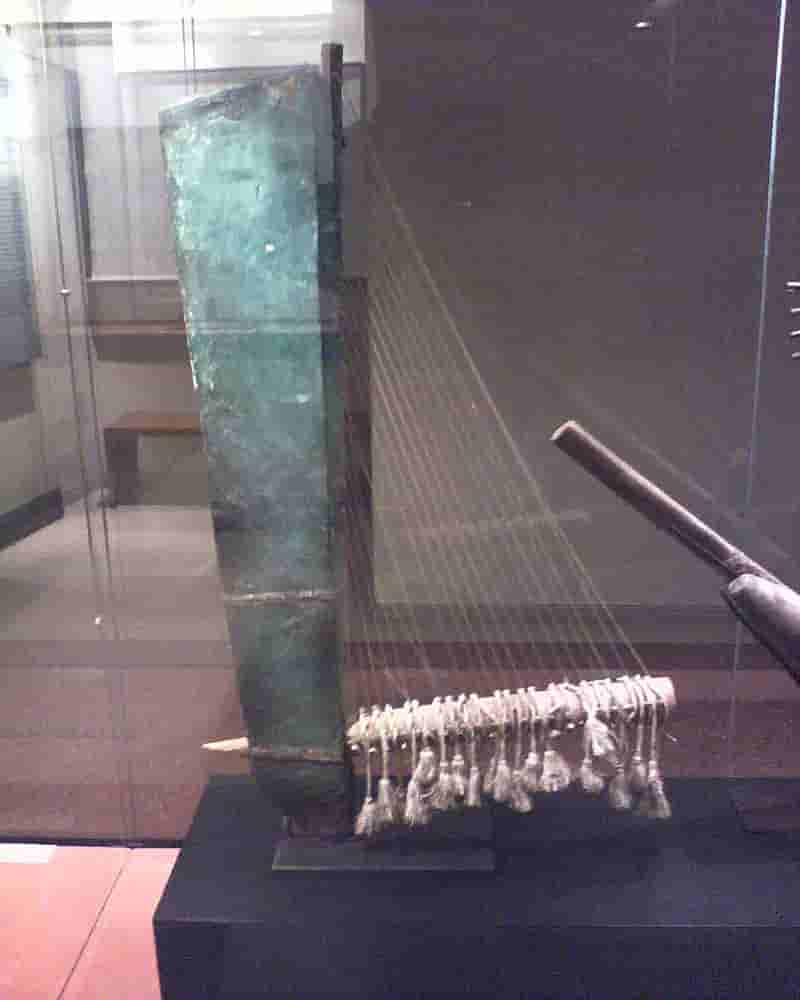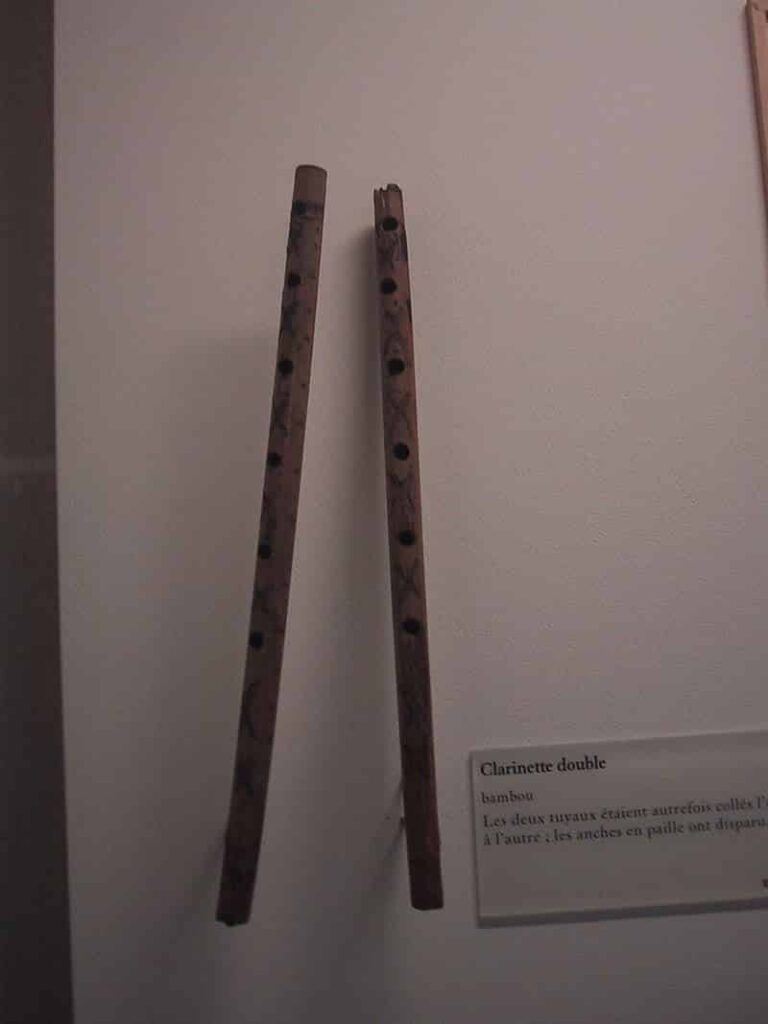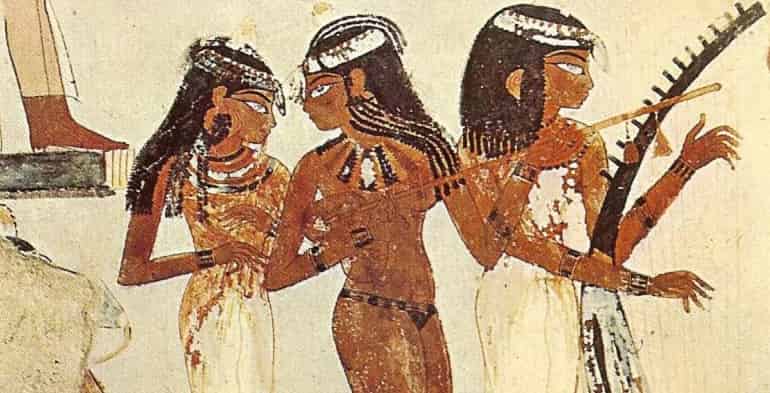The Music in ancient Egypt was used in various activities, but its main development was in the temples, which was used during the rites dedicated to different gods and was used as a therapeutic remedy, as indicated by some papyri: in fact, the sign hieroglyph for music is the same as for well-being and for joy.
As in other civilizations, it was also considered a means of communication with the deceased, and the musicians reached such a status that some are buried in the royal necropolises.
It is not known how it really was since they did not develop a system to represent it, it was transmitted from teacher to student, but there are some texts that allow knowing some aspects.
The instruments preserved in museums and the representation in bas-reliefs and paintings of instruments and dancers also shed light on this subject , in addition to those preserved by oral tradition by Coptic singers.

Evolution of music in ancient Egypt
Through the paintings, reliefs and offerings found in the tombs, as well as by studying the instruments found, a certain evolution of music can be followed.
At first they only had percussion instruments, so it is clear that the music was rhythmic. From the preserved images we know that it was used to invoke the favor of the gods on the harvest.
Old Kingdom
The music was religious, chants of the priests during the rites. By studying the instruments, of which there are numerous representations, it has been concluded that they followed a pentatonic or heptatonic scale.
Instruments:
Of wind:
Straight flute, vertical reed, with four to six holes, without a mouthpiece and almost one meter in length. It subsists to this day under the names of nay and uffata in the cultured and popular musics of Egypt.
Double chirimía, which consisted of two parallel reed reed tubes, of equal length, that sounded in unison. It is the current Egyptian instrument called zummarah. Perhaps the same melody was played in duplicate, with slight variations, as is done in current practice.
Trumpet, made of copper or silver, used in military parades and for worshiping the dead, were made of metal, similar to the Palestinian trumpet.
Of rope:
Harp with six to eight strings highly decorated. One has been found in the necropolis of Giza from circa 2000 BC. It rested on the ground, and its one-piece tailpiece is reminiscent of even the oldest musical bow.
It flows into a wide, shovel-shaped resonator, often painted with the eyes of gods, designed to counteract misfortunes. Its strings were attached to the bottom of a tuning bar, which hypothetically could have served to change the tuning of all the strings, as is done today with the pedal set of the modern harp.
In the iconography, the harp is seen as an accompanying instrument together with singers, flutists, etc., and on some occasions as part of an orchestra (a representation of an orchestra with seven harpists has been found).
Guitar, with three strings, with a neck twice as long as the body.
Percussive:
Cimbalos, It is a stringed instrument and is played with a pair of mallets in both hands, hitting the strings to make them sound. It is a kind of psaltery but larger, although there are also portable ones
Drums, percussion instrument of indeterminate sound, belonging to the family of membranophones according to the Hornbostel-Sachs classification system. It consists of a resonance box, which is usually cylindrical in shape, and a membrane called a patch, which covers the opening of the box.
Sistros, percussion instruments with a U-shaped wooden frame, a handle and cross bars that held metal plates, which varied over time.
Middle Kingdom
The range of instruments is expanded, with the adoption of the Asian lyre, African tensor drums and new kinds of sistrums: the old horseshoe-shaped sistrum is added to the Naos sistrum, with a stylized temple silhouette.
New Kingdom
Towards the 16th century BC, the Egyptians began to interact with the Mesopotamian peoples , and a new style appeared, focused on dances, with new instruments from Asia such as the double oboe, with two reeds placed at an angle, one to execute the melody and another for the accompaniment.
At this time the two-stringed lute arrived in Egypt, with a neck larger than the Mesopotamian one. The study of these two instruments indicates the beginning of a system using semitones.
The harp evolves especially, with a number of strings between eight and 16 and with a curved and ornate resonance box, used by priests. There is also a smaller harp, with three to five strings, which rested on the shoulder.
- The seven-string lyre became more curved, finishing it off with carvings.
- The trumpets evolve, and a metal ring is placed in the mouth.
- The rattles are made of ivory, with two long handles finished in spirals.
- A rectangular one is added to the range of drums.










